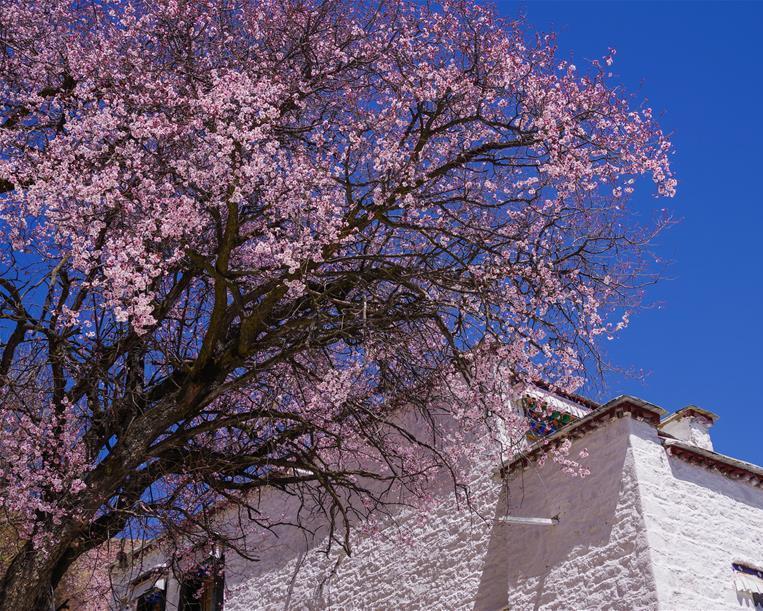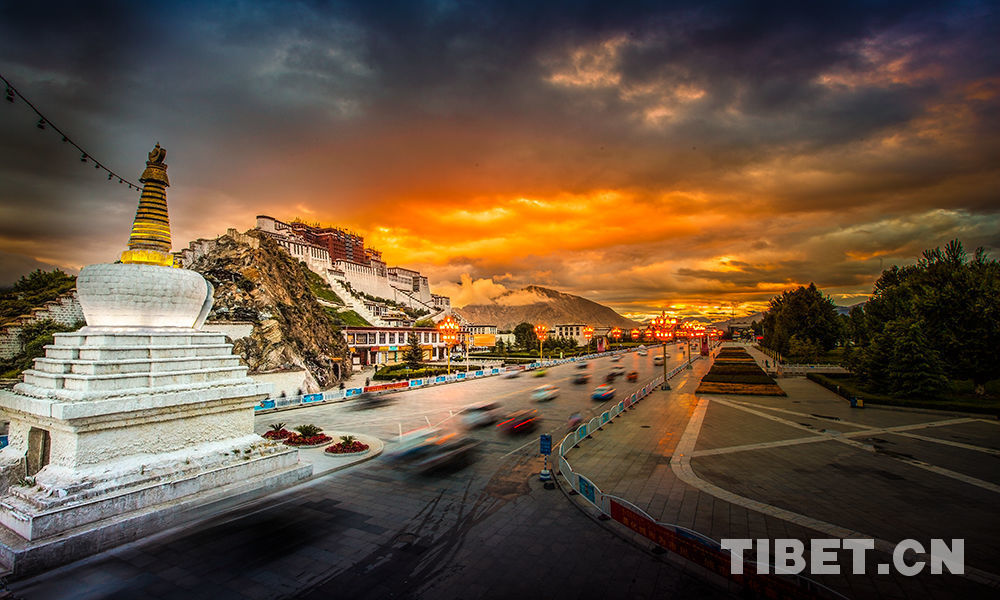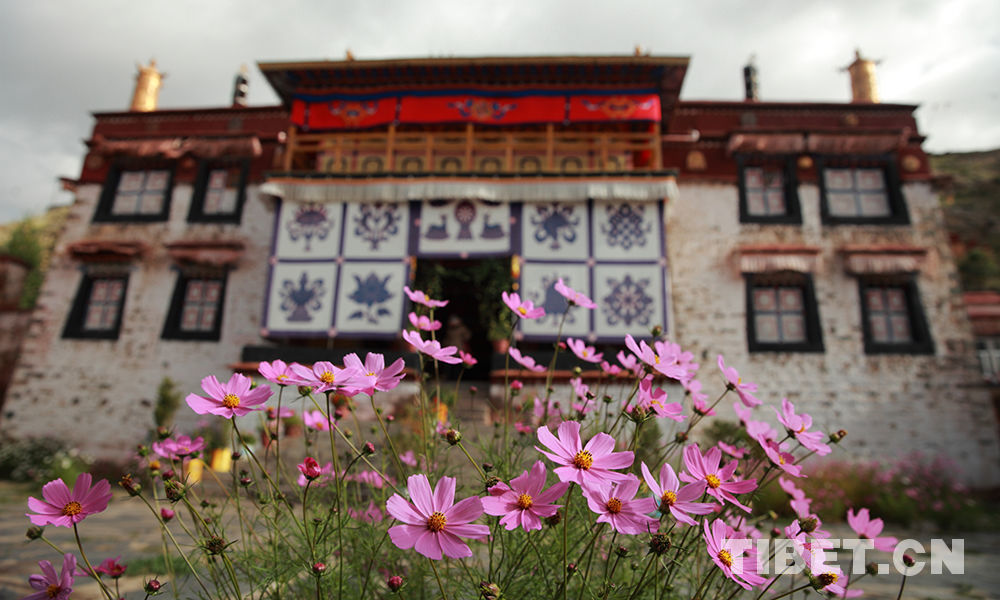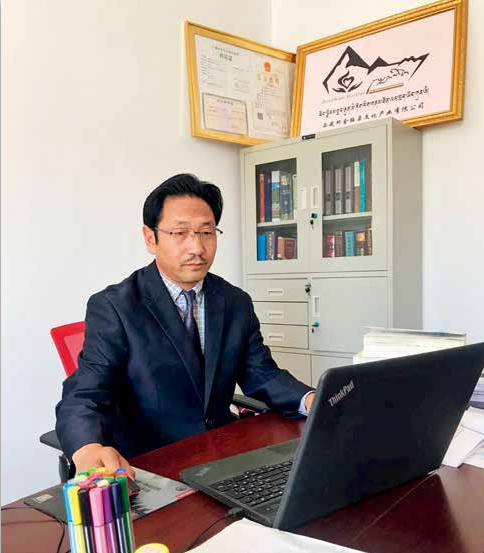Why the Dalai Lama could hold religious, political power in old Tibet?
From the 1st Dalai Lama Gendun Zhuba to the 4th Dalai Lama Yundain Gyaco, all of them were religious figures, neither had mastered the power of Tibet, nor had much influence. During that period, Pagzhu Kagyu Authority ruled Tibet, which lasted for 264 years (1354 - 1618 A.D.).
After the Parinirvana of the 4th Dalai Lama, it was time when the Pagzhu regime was toppled by Tsangpa Khan from the Karma Kagyu Sect who hated the Gelug Sect. In order to change the situation of Karma regime's persecution of the Gelug Sect, and to avoid the lineage extermination, the 4th Panchen Lama plotted to seek help from the Gushri Khan, the leader who occupied Qinghai Province at that time, and they finally decided to pledge allegiance to the Qing Dynasty. After a series of wars, Tsangpa Khan was captured in 1642, signifyinig the end of the Karma regime.
Gushri Khan invited the 5th Dalai Lama to the Samdruptse and "handed over" the political authority and his clans to the 5th Dalai Lama in order to show his piety to Buddhism. Therefore, the 5th Dalai Lama set up the Gandain Phodrang Regime in the name of the Gandain Phodrang Palace of the Drepung Monastery.
The 5th Dalai Lama sent Sechi Qugye (in ancient books also noted as Yilagu Kesan) as a delegate for the Qing Dynasty, who arrived in Shenyang (now capital city of Liaoning Province) in 1642, which was warmly welcomed by emperor of the Qing emperor Huang Taiji (1592-1643) even wrote a letter to award the 5th Dalai Lama.
Emperor Shun Zhi (1638-1661) sent envoys to condole the Dalai Lama and the Panchen Lama and offered alms to show his support after he broke through entered Shanhaiguan Pass, signifying that the Ming Dynasty was overthrown by the Qing Dynasty
In 1652, the 5th Dalai Lama led more than 3,000 followers to pay respect to Emperor Shun Zhi and was awarded a golden seal and golden imperial edict with the title of "a kind Buddhist lama in the west region benefiting the entire world".
Since then, the central government of the Qing Dynasty officially affirmed the Dalai Lama's position as the religious leader in Tibetan and Mongolian areas.
In 1751, the Qing Dynasty accredited the 7th Dalai Lama to head Gaxag (the local government of Tibet) and allowed them to inherit the power, which was strengthened step by step with the support of the central government of the Qing Dynasty.
It was not until March 28, 1959 that the Gaxag was dissolved by central government of the People's Republic of China after the 14th Dalai Lama launched an armed rebellion. And the Preparatory Committee for the establishment of the government of the Tibet Autonomous Region replaced the former Gaxag's authority. By then the Dalai authority had assumed the local political and religious power of local Tibet for 317 years.
It can be inferred from the facts that the 5th Dalai Lama came to power by using armed forces of the Mongolian tribes by means of violence and bloodshed. The Dalai Lama could take charge of the local government of Tibet for 317 years, mainly because the central government officially confirmed the Dalai Lama's position of religious leadership in the Mongolian and Tibetan areas.
Historical opportunities,different personalities between the Dalai Lama and the Panchen Lama are also crucial factors for the Dalai Lama to obtain political and religious power. In Tsongkhapa disciples, the 1st Panchen Lama enjoyed an obviously higher position than the 1st Dalai Lama. However, the 2nd Dalai Lama had the opportunity to become the abbot of both the Sera monastery and the Drepung monastery in Lhasa, which made him exposed to more believers and had also raised his prestige. The 3rd Dalai Lama was invited by the Mongolian leader Altan Khan to preach in Qinghai, which made him more exposed to believers in Mongolia.
The reincarnation of the 4th Dalai Lama in a Mongolian family also strengthened his support from leaders and believers of the Mongolian tribes. Besides, the 4th Panchen Lama was very modest and he provided help to the 4th and 5th Dalai Lama. With the help of the 4th Panchen Lama, the 5th Dalai Lama established Gan Phodrang Tibetan local government by uniting the leader of a Mongolian tribe and defeating Karma regime, which laid the foundation for the Dalai Lama's political leadership.
From then on, though the Panchen Lamas had chances to become political leaders in Tibet, they gave up mainly because they wanted to focuse more on religious study. For example, the Qing government had provided three opportunities to the 5th Panchen to raise his position in Tibet and become the leader, but the 5th Panchen rejected them all and stated that he was a monk, who should not handle worldly affairs. Since then, there have been two local regimes in Tibet, one is Tibet's local government led by the Dalai lama, the other one is led by the Panchen lama. The two regimes were both supervised by the grand minister in Tibet and directly under the leadership of the Qing government. The situation had lasted until the Democratic Reform in Tibet.
Your Comment
Name E-mailRelated News
-
;











